
Southwest Michigan is known for its diversity of fruit crops. Lake Michigan shelters the region’s plethora of grapes, apples, peaches, cherries and berries from extreme weather, while proximity to Chicago, Detroit and Indianapolis gives growers sizable markets.
“For a century or more, Southwest Michigan has been the fruit basket for some very large communities in the Midwest,” said Michigan State University viticulture specialist Mike Reinke, who’s based in the region.
It’s that very crop diversity that helps keep the region’s fruit growers afloat, allowing them to spread out their labor and equipment costs, extend their revenues and mitigate risk. Two Southwest Michigan fruit growers, the Oxleys and Marc Willmeng, exemplify the advantages of growing multiple fruit crops.
Oxley family
In Lawton, Michigan, Ed, Chris and Rick Oxley go from cherry to grape to row crop harvest, and they use the same workers and some of the same equipment for each. Crop diversity helps with profitability, too. Tart cherry prices were very low last year, but higher grape prices saved them, Chris said.
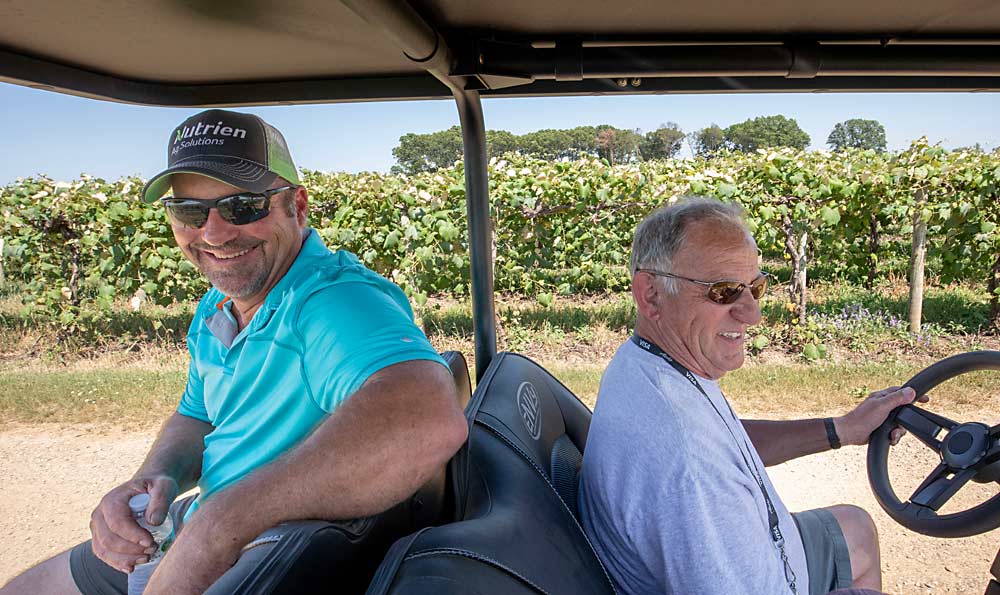
The Oxleys raise 250 acres of tart cherries, 550 acres of juice grapes, 150 acres of wine grapes and 600 acres of corn and soybeans. They hire local and migrant employees. To save on labor costs, they mechanically harvest all their crops, including wine grapes.
Ed Oxley started farming his grandfather’s small grape plots in the late 1960s and gradually expanded his vineyards over the years. Seeking to diversify, he started growing cherries in substantial volumes in the early ’70s. He chose cherries because a local processor wanted to buy them, and their harvest time didn’t interfere with grape management.
“If there was such a thing as a slow time in grapes, it was during cherry harvest,” he said.
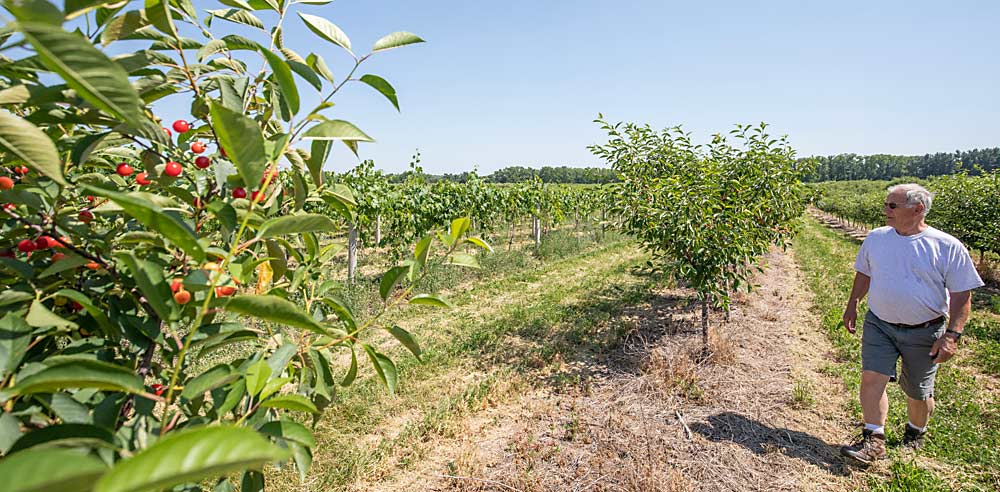
Most of their Concord and Niagara grapes are sold to Welch’s for juice. Their wine grapes are sold to St. Julian Wine Co. in nearby Paw Paw, the oldest and largest winery in Michigan. They grow 26 wine grape varieties, mainly French-American hybrids and cold-hardy hybrids from Minnesota, with a few acres of Vinifera grapes. They’ve planted more Minnesota varieties in the past decade because those better survive tough winters and are therefore more consistent producers. The grapevines are all pruned by hand.
Reinke said the Oxleys are known as innovators and have always excelled at turning challenges into opportunities — by building their own grape sprayer or high-density tart cherry harvester, for example.
Ed Oxley said a “fruit mentality” can be applied to more than one fruit crop. Fruits have tighter windows than most other crops, and they require greater vigilance.
“Timing is everything in this business,” he said. “You have to pay attention and be very astute about it.”
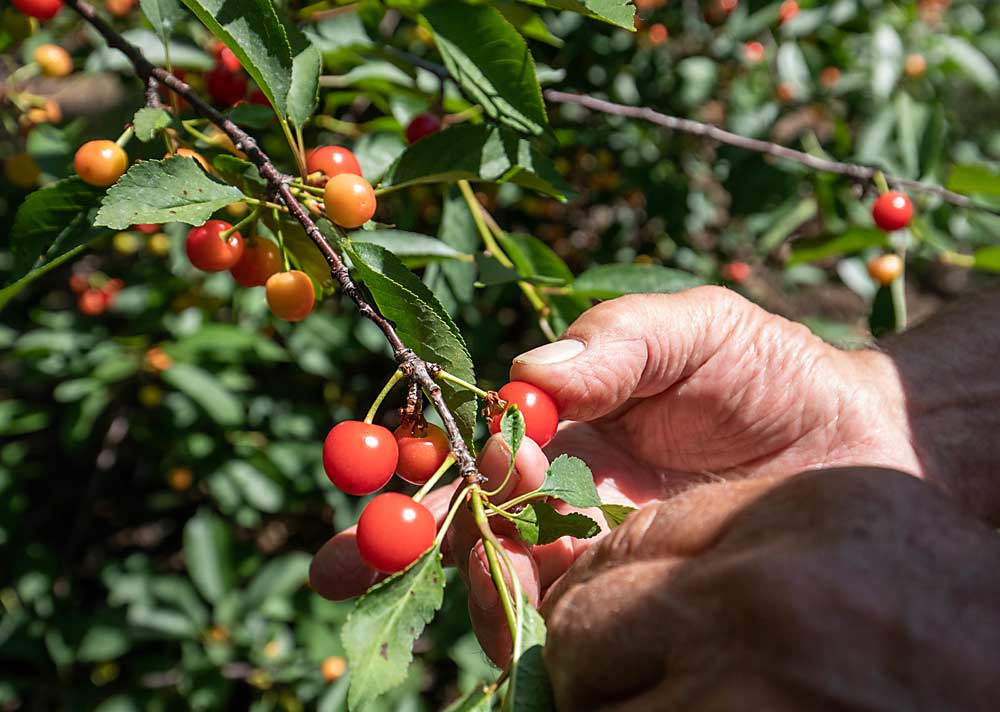
Marc Willmeng
About 25 miles west of Lawton, Marc Willmeng grows 150 acres of fresh-market peaches at his Watervliet orchard. He also grows 112 acres of tart cherries and 120 acres of apples. The three crops spread out his labor demands and cash flow. Tart cherry harvest typically begins July 4 and runs about 10 days. Peach harvest typically runs from July 27 to Aug. 20, and his crews finish the year with apple harvest.
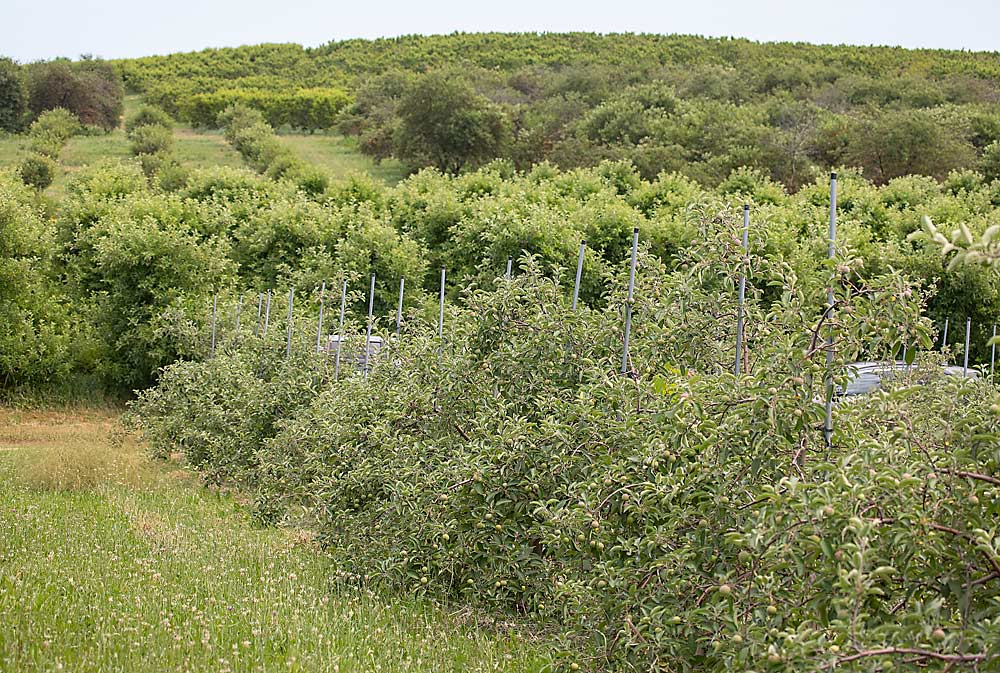
Willmeng contracts 24 to 30 H-2A workers annually, depending on the size of the crop. They show up around June 10, thin peaches for two weeks, leave to work with other growers, then come back for peach harvest and stay until apples are picked. In between, he and his eight year-round workers handle the mechanized tart cherry harvest.
Willmeng, a fifth-generation grower, inherited his crop mix from his father. He more than doubled his peach acreage in 2017 when he bought an 80-acre orchard. The purchase made him the largest peach grower in Michigan.
Willmeng decided to double down on fresh peaches, a risky and labor-intensive crop, for a few reasons. His soils are sandy — good for peach trees. His fresh fruit packer, Greg Orchards, is 3 miles down the road — crucial for a fragile crop that requires cooling immediately after harvest. And his long-term employees — he highlighted Daniel Montalvo, Lucino Saavedra and Celina Martinez — are extremely dedicated and skilled. He said Martinez trims all of his peach trees in a uniform style. “They’re my loyal team,” Willmeng said. “I couldn’t do it without them.”
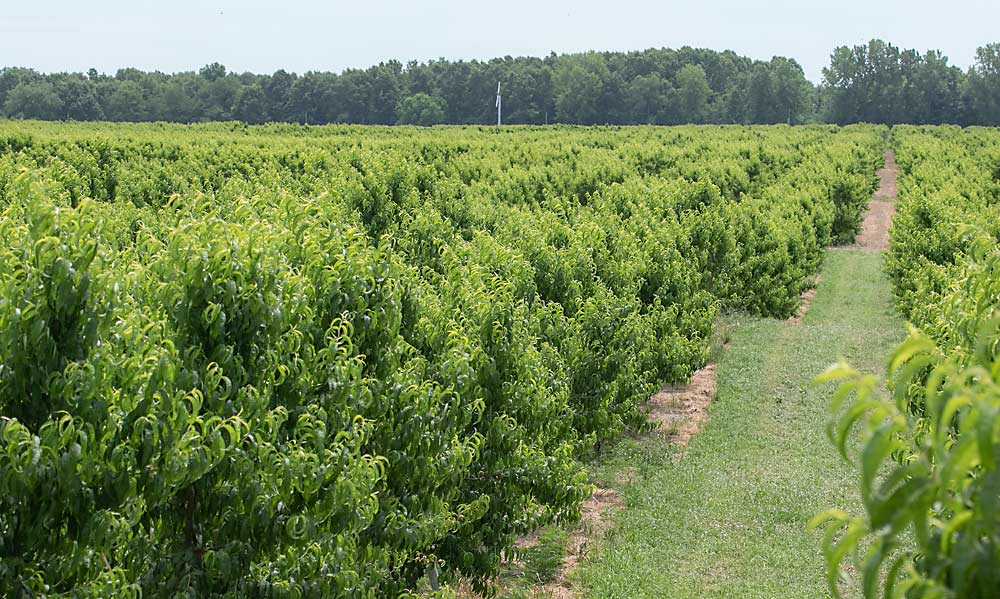
To successfully grow peaches in Southwest Michigan, you need elevated ground, sandy soils and good tree-training practices. Willmeng’s farm has all three of those, said Bill Shane, a longtime MSU extension specialist and peach breeder in the region.
Willmeng grows 16 varieties of peaches that have staggered ripening times, to give his workers a decent volume to pick every day and so he never misses a day on the market.
He “dabbled in wine grapes” at one point but decided three fruit crops was enough. His current acreage is “exactly where it needs to be,” he said. “I want to be very good at the three things I grow.”
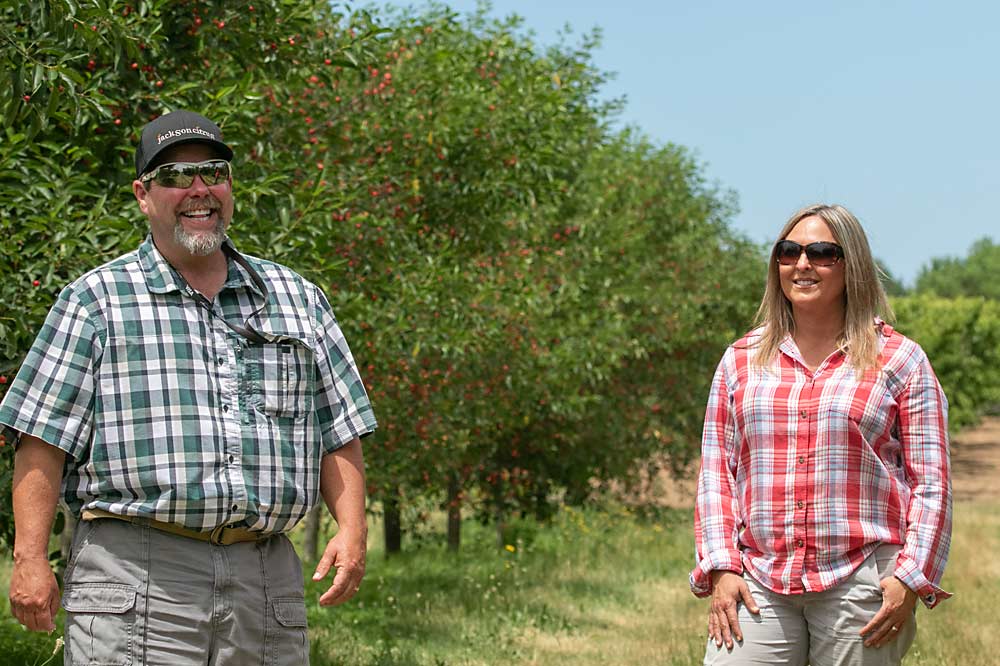
If one of his crops is lost, or its price tanks, the others make up for it. He actually had a full crop in all three fruits last year, for the first time in about a decade. The only year he lost all three was 2012, when an early bloom and spring freezes devastated Michigan fruit crops.
With limited resources, Willmeng must pick and choose his orchard improvements. He chose to invest more in wind machines for frost protection and in freestanding peach trees than in irrigation or high-density plantings. He spaces peach trees at 10 feet by 18 feet and grows on Bailey and Lovell rootstocks, a lower-investment planting suited to peaches’ expected lifespan.
“A peach tree is trying to die on you the first day you plant it,” he said. “You’re constantly replacing them.”
—by Matt Milkovich
Going over the top with a high-density harvester
Southwest Michigan’s Oxley family has always had a mechanical bent, and they are always on the lookout for new ways to save on labor and harvest more efficiently. Those inclinations led to what is probably the most unique piece of machinery in their farm shop: an over-the-row tart cherry harvester they designed and built themselves.
Ed Oxley said they got their “over-the-row mentality” from their decades of work with grape equipment. The idea to use the method on tart cherries started in 2010, after hail destroyed a 50-acre block of 1-year-old trees. The block was the standard Montmorency on Mahaleb rootstock, planted 19 feet by 21 feet and destined for harvest by trunk shaker. The Oxleys decided to cut off the damaged trees just above the graft union to see what would grow back. They also planted two new trees between each surviving tree, to see if the higher density would keep the trees small.
They used a modified over-the-row blueberry harvester to harvest the experimental block. The method worked well as long as the trees stayed small, but the Montmorency on Mahaleb trees refused to dwarf, even with tighter spacings. They also realized that larger trees were necessary in order to get adequate yields.
That meant they needed a larger machine. After a deal fell through with a manufacturer they contacted to build a specialized harvester, the Oxleys decided to build their own a few years ago, borrowing ideas from grape, blueberry, cherry and coffee harvesters.
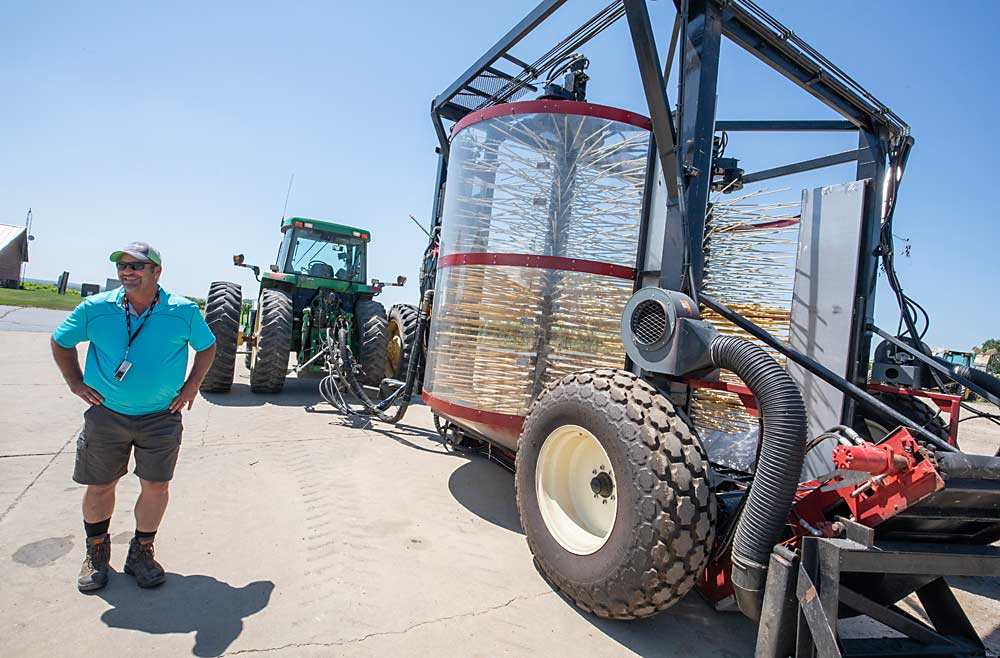
Their custom harvester is pulled by a tractor and powered by its power take-off. When the machine encompasses a cherry tree, its rotary tines shake fruit off individual limbs, much like a blueberry harvester. The cherries drop onto conveyors that carry them rearward to water-filled tanks that keep them cool. When a tank is full of fruit, the harvester automatically drops it on the ground, and a forklift, following behind, places another tank on the harvester, all in continuous motion. The machine is gentler on the trees than a standard trunk shaker, and it’s about three times faster, Chris Oxley said.
The new harvester allows them to generate revenue from tart cherry trees much sooner, instead of waiting seven or more years for the trees to be big enough for shaking. But, Ed said, “the jury is still out” on their modified high-density tart cherry harvest, and they’re still tweaking the system. They space new plantings 9 feet by 20 feet and harvest them for three or four years with the over-the-row machine. When the trees grow too big for the machine, they remove every other tree and harvest the remainder with standard trunk shakers.
—M. Milkovich

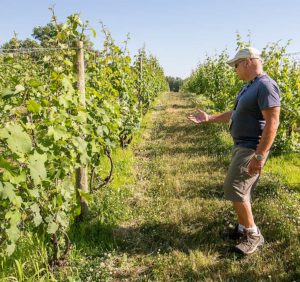





Leave A Comment